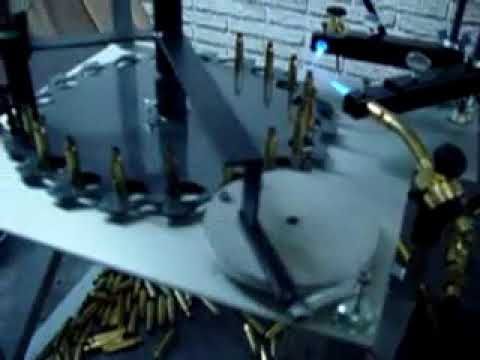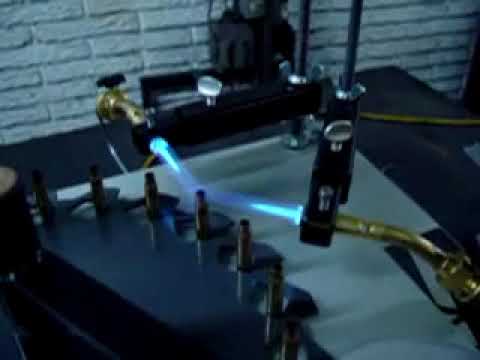Lee Q. Loader
Member
- Joined
- Jan 30, 2018
- Messages
- 444
Youll see the case mouth and shoulder just start to flash orange. Thats when you know it good.For the ignorant among us, is there a way to visually tell when the brass has reached the proper temperature? During the process?
Doesn't dropping them into water quench/harden them? I thought the point was to get the brass malleable/soft again.I've used my propane torch for decades. But I use a 3/16" SS rod in my battery drill to spin cases. Just drop the case over the rod, and squeeze the trigger on the drill lightly to slowly turn it in the flame. I keep a 5 gallon bucket of water at my feet and just point the drill towards it and cases fall into the water after annealing. Repeat until done.
I never let my cases turn color! If they turn color they're likely too soft. A couple turns in the flame is all it take to slightly soften them.
No. Quenching does not harden brass like it would steel. It has no consequence. It's neither beneficial nor harmful. I don't do it because it would require me to dry the brass. In fact, I often start with semi-dry brass from the wet tumbler and annealing helps me dry it, so I wouldn't want to drop it back in water.Doesn't dropping them into water quench/harden them? I thought the point was to get the brass malleable/soft again.
For the ignorant among us, is there a way to visually tell when the brass has reached the proper temperature? During the process?
I direct at the middle of the shoulder or shoulder/neck junction. The neck being quite a bit thinner will get plenty hot and anneal with no issues.Do you guys direct the pencil tip flame towards the top, middle or bottom of the shoulders?
I use a machine that has an adjustable dwell time (the case stays in the flames) and set it fast to begin with and slow it down, until the (propane) flame turns from blue to orange and speed it up just enough so it indexes before the flame changes colors.
No glowing of the case, any shade.
This guy has his machine set to about 4 seconds in the flame (tip of the pencil flame on .223 brass) from what I can see... 13 seconds sounds like a lot, but I've never done this process before.I use a torch too. And a drill with a socket. 13 seconds seams to be the sweet spot in the flame .
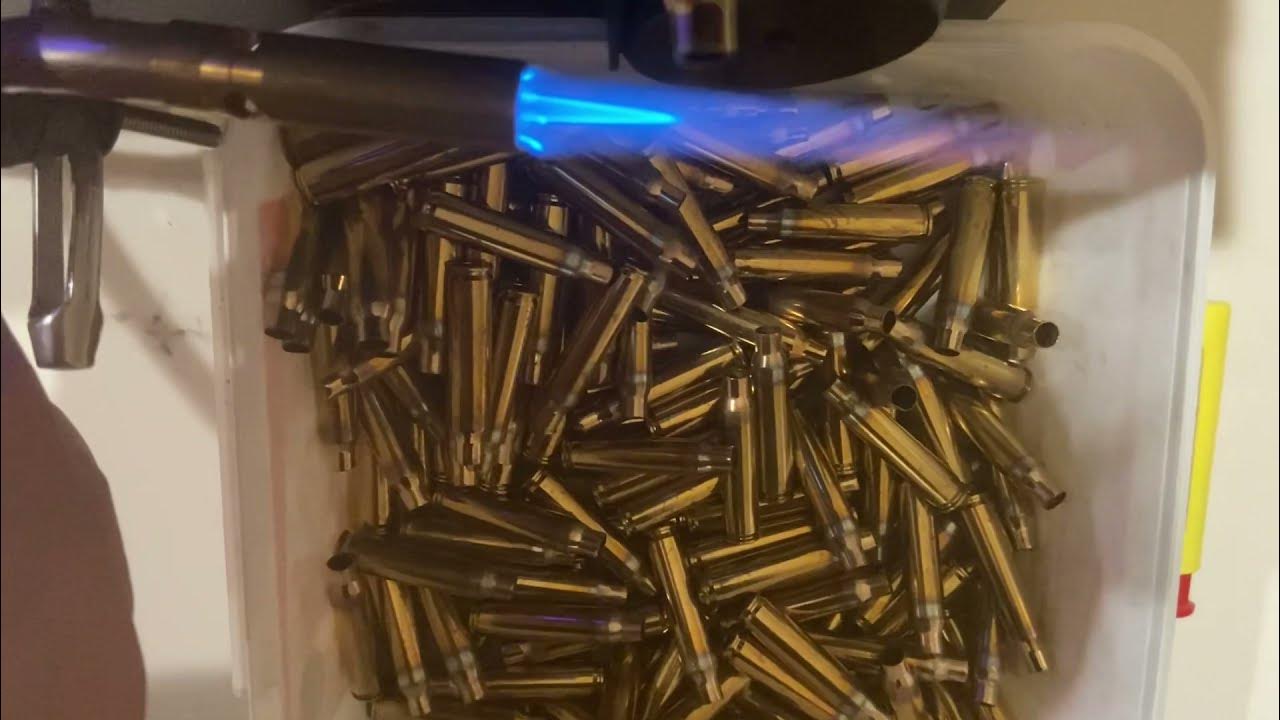
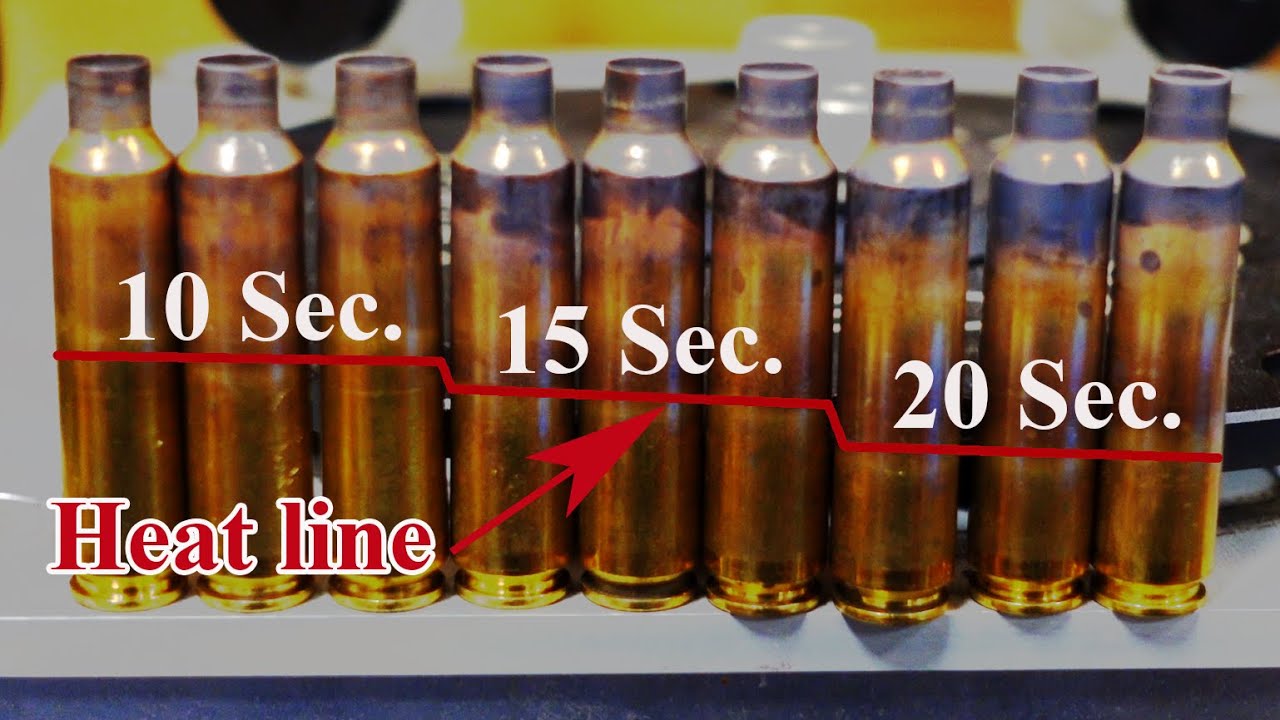
This guy has his machine set to about 4 seconds in the flame (tip of the pencil flame on .223 brass) from what I can see... 13 seconds sounds like a lot, but I've never done this process before.

Flame control when annealing brass
*****new updated video on flame control available soon!Flame control when annealing with Burstfire 2 in 1 Case Annealer & Case Prep CenterFlame control Minim...youtu.be
Erik does a good job laying out why brass is pretty forgiving and is why I dont get too wrapped around the axle on things being perfect.Some more fuel to the fire, so to speak

I over annealed brass and then F/L sized it. UNEXPECTED RESULTS!!!
Visit my website: https://erikcortina.com/Support me on Patreon! https://www.patreon.com/ErikCortinaGet my shirts here:https://erikcortina.com/merchyoutu.be
I was one of those curious kids that experimented. I had a shop at home and did stuff. I can't claim that I accomplished a lot in the way of producing anything, but I tried burning stuff. Thankfully, I never destroyed accidentally destroyed anything valuable. More recently, I was helping a high school kid with stoichiometry for his Chemistry class. I made some zinc chips by machining a penny. Cartridge brass is about 70% copper and 30% zinc, but a penny is mostly zinc with a little copper plating. We weighed a big 3.0 grain zinc chip and then oxidized it with the torch. When the zinc combusted, it shot off a big green flame. It gained some mass so that it weighed about 3.7 grains. Mine is the only chem lab equipped with a Redding No. 2 balance for weighing stuff. Of course, we had to do it a few times because those green flames were pretty cool. From the mass gained by the chips, we determined that the empirical formula for Zinc Oxide is ZnO.I use a machine that has an adjustable dwell time (the case stays in the flames) and set it fast to begin with and slow it down, until the (propane) flame turns from blue to orange and speed it up just enough so it indexes before the flame changes colors.
No glowing of the case, any shade.
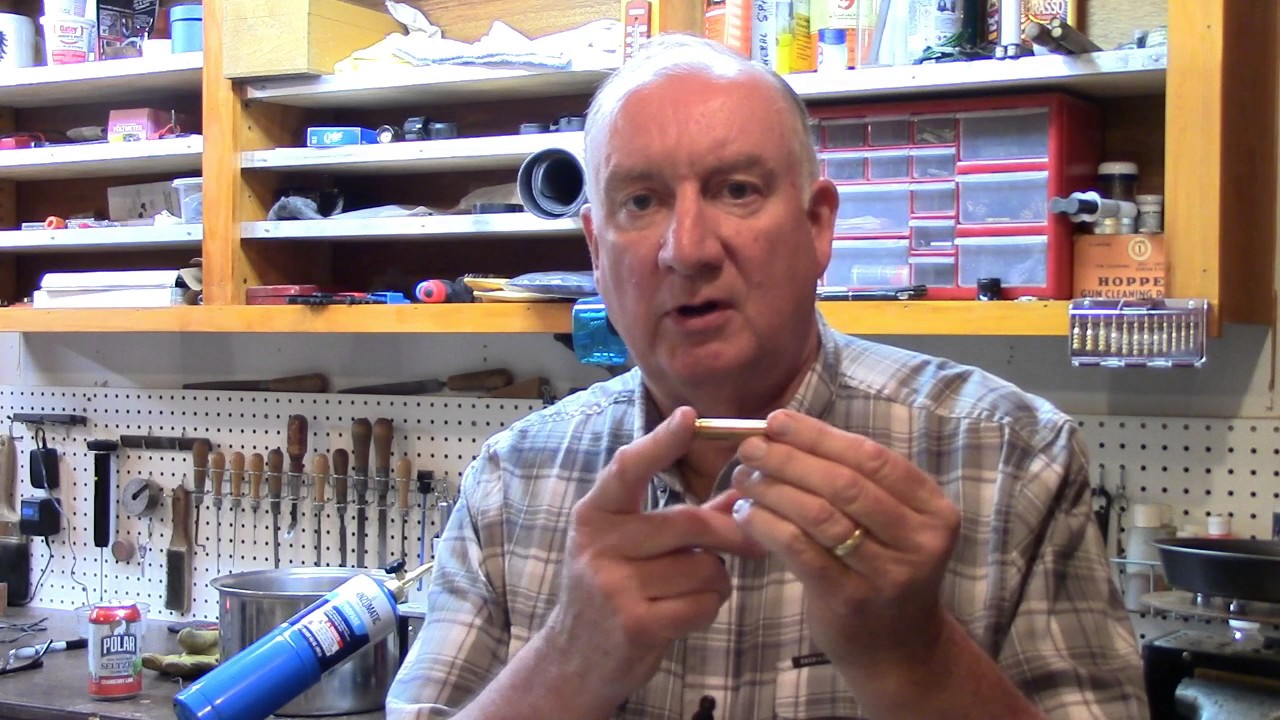
I used a small cake pan with a damp cotton washcloth, one less mess to deal with.Doesn't dropping them into water quench/harden them? I thought the point was to get the brass malleable/soft again.
